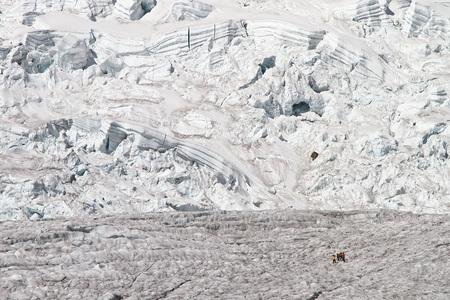Multidecadal to Centennial Climate Variability: Assessing the Conditions for the Glaciation of Tropical Mountains

Glaciers throughout the world, including tropical glaciers, have been shrinking over most of the 20th century. Generally, this is attributed to global warming. While climate-glacier interactions in the mid and high latitudes are reasonably well studied, glaciers in the tropics are typically harder to access, situated in a region characterized through extremely sparse observations, and therefore less well understood.
Recent glaciological studies have lead to the conclusion that tropical glaciers are often more sensitive to variability in moisture than temperature, and connections have been drawn between glacier mass balance and large-scale climate modes, e.g. variability of the Indian Ocean Dipole Mode influencing mass balance on Kilimanjaro, Tanzania, and low-frequency modulation of El Nino/Southern Oscillation influencing the glaciers of the Cordillera Blanca, Peru. However, the respective roles of anthropogenic (e. g. emission of greenhouse gases) or natural (e. g. volcanism) changes to the forcing of the climate system, internal variability, or interactions of these two, remain unclear.
In order to understand the currently observed strong retreat of tropical glaciers around the world, and to assess their prospect over the next century, it is important to understand the climate dynamics governing atmospheric conditions at the site of these glaciers, i.e., in the tropical mid troposphere.
The project will combine the best available glaciological observation from three continents, reconstructions of past glacier extent, and multi-century ensemble climate reconstructions from four different state-of-the-art, global coupled climate models in order to gain insight into the large scale climate dynamics governing the conditions at the glacier sites and acting on glacier timescales.
The modes of multidecadal to centennial climate variability will be identified, and the past atmospheric variability and its effect on the glaciated sites will be reconstructed. These reconstructions will be validated using direct observations, and proxy-reconstructions of atmospheric state and the glacier extent. The relative importance of internal variability and anthropogenic influence during the 20th century will be assessed. This will lead to conclusions about long-term predictability, and – if deemed possible – to estimates of the most likely atmospheric conditions that the glaciers will experience during the 21st century.
Project
Project Leader:
Ben MARZEION
Members:
Fabien MAUSSION
Project Duration:
01/01/2010 to 12/31/2014
